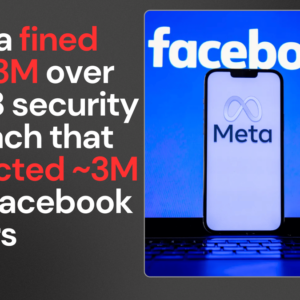How Nations Are Preparing for Cyber Warfare: A 2025 Update
Have you noticed how the battlefield has shifted dramatically in the past few years? As of May 2025, the most significant threats to national security no longer march in formation or fly overhead—they move through fiber optic cables and wireless networks at the speed of light. The new frontlines exist in data centers, cloud infrastructures, and critical systems that power our everyday lives.
Recent data from the Global Cybersecurity Index reveals that cyber attacks against critical infrastructure have increased by 78% since 2023, with the average cost of national-level breaches now exceeding $24 billion. This digital arms race has nations scrambling to build virtual moats and digital fortifications at unprecedented rates. But who’s winning, and what strategies are proving most effective?

SOURCE: Medium
How Nations Are Enhancing Their Cybersecurity Measures for 2025
The most significant shift we’re seeing in 2025 is the integration of AI-powered defense systems. Countries like the United States, Israel, and Singapore have implemented adaptive security protocols that can identify and neutralize threats without human intervention. These systems learn from each attack, constantly evolving their defense mechanisms against increasingly sophisticated state-sponsored threats.
Another notable development is the creation of specialized cyber military units. China’s Strategic Support Force has reportedly grown to over 100,000 personnel, while the U.S. Cyber Command now operates with expanded authority to conduct preemptive defensive operations outside domestic networks. The UK’s National Cyber Force, formed in 2020, has tripled in size by 2025 with capabilities extending beyond defense into active countermeasures.
Public-private partnerships have also transformed national cybersecurity landscapes. Estonia, which suffered devastating cyber attacks in 2007, now leads Europe in fostering collaboration between government agencies and private sector experts. Their nationwide encrypted data backbone, completed in March 2025, ensures critical systems remain operational even during sustained attacks.
The Latest Trends in Global Cyber Warfare Preparedness
Quantum computing defense has emerged as the cutting edge of cyber warfare readiness. China’s significant investments in quantum-resistant encryption protocols have forced other nations to accelerate their own programs. Japan and Germany established a joint Quantum Security Alliance in January 2025, pooling resources to develop countermeasures against quantum-based attacks on financial systems.
Supply chain security has become another critical focus after several devastating attacks exploited vulnerabilities in globally distributed software. The European Union’s Digital Supply Chain Security Act, implemented in February 2025, now requires rigorous security validation for all software components used in critical infrastructure, creating a new standard that many nations are rushing to adopt.
Perhaps most telling is the rise of cyber deterrence doctrines. Similar to nuclear deterrence strategies of the Cold War, nations are publicly signaling their offensive capabilities while establishing clear red lines. The multinational Cyber Geneva Convention, though still in negotiation, represents an unprecedented attempt to establish rules of engagement in digital warfare.

SOURCE : jfcbs.nato.int
Which Countries Are Leading in Cyber Warfare Readiness
Israel continues to maintain its position as the cyber superpower, with its Unit 8200 intelligence corps producing technologies and talent that drive global cybersecurity innovation. Their “Digital Iron Dome” framework, which automatically identifies and neutralizes incoming cyber threats, has been partially licensed to allied nations since late 2024.
The United States has made significant strides through its Comprehensive National Cybersecurity Initiative, addressing previous vulnerabilities in critical infrastructure. The program’s $18.5 billion investment since 2023 has modernized aging systems and established rigorous security requirements for federal contractors.
Surprisingly, South Korea has emerged as a formidable cyber power, leveraging its technological expertise and experience defending against North Korean attacks. Their Cyber Defense Corps, established in 2022, now trains over 5,000 specialists annually and has pioneered new methodologies for protecting semiconductor manufacturing facilities—a capability of increasing geopolitical significance.
Aligning Business Strategies with National Cyber Defense
For businesses, alignment with national cybersecurity strategies has become both a competitive advantage and a regulatory necessity in 2025. Companies that participate in the U.S. Department of Homeland Security’s Enhanced Cybersecurity Services program gain access to classified threat intelligence while contributing to national security. Similar programs exist in the UK, Australia, and Singapore.

Industry-specific security standards have evolved significantly, with financial institutions now required to maintain resilience against sustained attacks under the Basel IV cybersecurity amendments. Healthcare organizations face similar requirements under the International Medical Systems Security Framework introduced in April 2025.
The most forward-thinking companies are implementing cyber resilience measures that mirror military preparedness models. Regular tabletop exercises simulating worst-case scenarios, redundant systems that can operate during extended attacks, and cross-training personnel for cyber crisis response are becoming standard practice among Fortune 500 companies.
The Road Ahead: Collaboration Is Key
As we navigate the increasingly complex cyber warfare landscape of 2025, one truth stands out: no organization or nation can achieve security in isolation. The interconnected nature of our digital infrastructure means that collaboration—between governments, private enterprises, and security researchers—has become the foundation of effective cyber defense.
Is your organization prepared for the cyber threats of tomorrow? By understanding how nations are strengthening their defenses and aligning with these strategies, businesses can not only protect themselves but contribute to the collective security that benefits everyone in our connected world.












